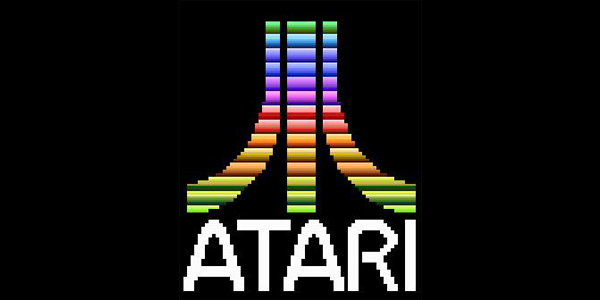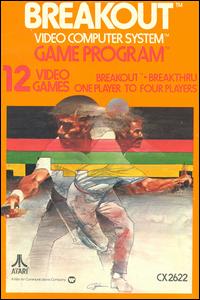
Breakout
The year is 1976, the United States and Soviet Union are in the midst of the Cold War and the economy is shit. So a bunch of nerds decide to make a video game, give the middle finger to the commies, and save America. Such is the power of video games in general, but Breakout in particular. Thankfully for Atari 2600 owners, we only had to wait 2 years for our port so that we too could support freedom and stuff.
Background/Plot
Two of the nerds I referred to above are Nolan Bushnell, Atari’s founder, and Al Alcorn, the dude who designed Pong. The concept for the game was theirs. Alcorn then had the bright idea of asking some schmuck named Steve Jobs to design the prototype, who in turn asked another loser named Steve Wozniak to help out. For any of you who have read my previous articles and who may have noticed that they contains about 10% facts and 90% made-up bullshit, I would like to emphasize that the first three sentences in this paragraph are 100% true. I’m serious.
Moving on, this gaggle of geeks decided to not just make a game inspired by Pong, but also a game that would subconsciously instill a hatred of the Soviet Union generally, but the Berlin Wall more specifically. In the game, you control a small, thin rectangle name Ronnie Raygun and your goal is to tear down this wall you find in front of you.

Sound
You’ve just got your regular 2600 bleeps and bloops here. They add nothing to the game other than keeping it from being completely silent.
Graphics
When everything in the game is simple squares and rectangles, it’s easy to dismiss the graphics as being boring or plain. In a sense, they are, but there are subtleties to them. The colour, for instance, is important. Going from blue to red wasn’t just a simple matter of deciding to use the colours of a rainbow. The player finds himself on the blue side of the wall; hence, he or she is on the side of not only liberty, freedom, and democracy, but also on the West German side of the wall. The far side of the wall is red, representing tyranny and communism, and by extension, East Berlin.
Gameplay
You can move from left to right, emphasizing the fact that to win, you need the cooperation of both sides; i.e., liberals and conservatives. As well, the player’s small “paddle” stands in stark contrast to the large and imposing wall, and combined with the even smaller square (or stone), almost makes you want to give up before you even start. How can you possibly manage to destroy that wall brick by brick? What’s the point? This is how many people felt about their role in the Cold War. Sure, the government and military can have an impact, but what can I, one person, possibly do to make a significant difference? Yet, if you just try, work hard, and keep it at, suddenly you notice that a good deal of the wall is gone. Suddenly, you’ve managed to poke a hole clean through and it is as though you’ve inspired someone on the other said to aide you in your cause!
Next thing you know, there are only a few bricks left and then, miraculously, you’ve completely eradicated the wall, but not only that, you did it without bomb and tanks, without killing anyone in an explonsion. You simply started picking away at a wall, all by yourself, brick by brick, until it was gone.
Conclusion
To be honest though, the game is a little broken. First off, the controls aren’t very tight. Using the paddle controller to move from left to right can be a little tricky. Also, though there is a pattern, the angle at which the “ball” will deflect off your paddle just seems random. Finally, besides clearly flying through a rectangle piece without explonding it, the ball does not bounce against the sides of the rectangles (as you can see in the video above). It just looks ridiculous when it happens.
In the end, Breakout is a very simple game and, much like Pong, was great for its time; however, unlike Pong, the game just seems too simple and even incomplete at times. I could still play Pong, alone or with a friend, and kill a good half hour, but with Breakout, I would much rather play other games that happened to be inspired by it (Arkanoid, for example). It’s a “classic”, but it’s a little like how some “classic” things should be watched/read/etc to get a better appreciation of the history of art form and not necessarily for the enjoyment you get from the piece itself. In other words, play Breakout, then play Super Breakout, and THEN play Arkanoid. Trust me, you’ll be glad you did.
